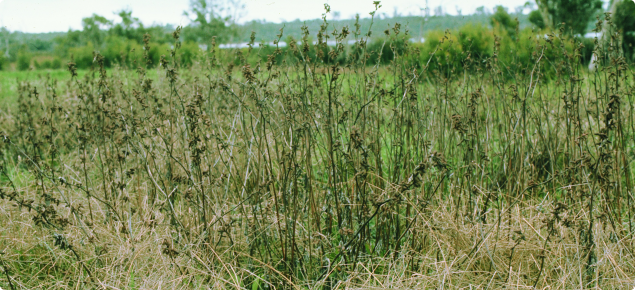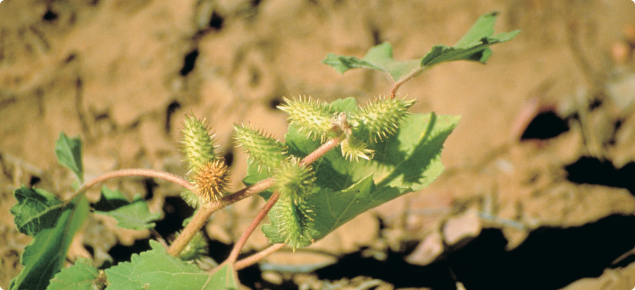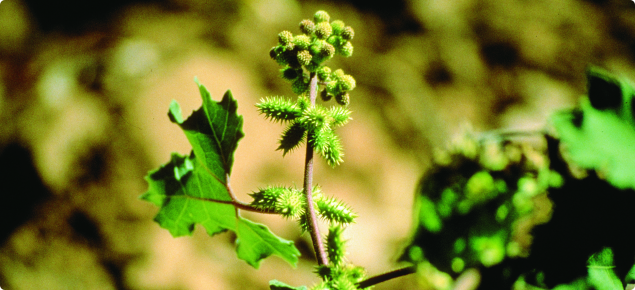Form: herbaceous — annual
Status: present in WA
Native to western United States of America. Locally abundant in parts of the Kimberley, especially near water courses. Occasionally found in the South-West of Western Australia.
Appearance
Erect annual herb growing up to 2.5 metres high, usually about one metre, reproducing by seed.
Stems: Blotched or streaked with purple, somewhat zigzag in their arrangement, covered with upward pointing short hairs.
Leaves: Darker green on upper surface. Lower leaves alternate, similar in shape to a grape leaf, to 15 centimetres wide, divided into three to five large lobes and coarsely toothed. Leaves have a rough texture due to minute bristles, glandular hairs and prominent veins carried on grooved stalks 10-20 centimetres long. Stalks and veins reddish or purple.
Flower: Inconspicuous clusters of both male and female are borne in leaf axils towards the end of branches. Flowers mostly in summer and autumn.
Fruit: A hard brown woody elliptical burr 1.2 to 2 centimetres long, armed with hooked spines and two prominent terminal beaks.
Seed: Brown or black, two in each burr, six to ten millimetres long, one larger than the other, flattened on one side.
Noogoora burr is often abundant after spring or summer floods in the far north. It impedes shearing and is a major cause of vegetable fault in wool. Young plants are more toxic than mature plants; sheep, cattle and pigs are affected; poisoning seldom occurs unless stock are starving. Can cause contact dermatitis in humans and animals.
Agricultural and economic impact
Burrs contaminate wool. Plants are toxic to livestock, especially seedlings.
Declared pest category
The Western Australian Organism List (WAOL) contains information on the area(s) in which this pest is declared and the control and keeping categories to which it has been assigned in Western Australia. Search for Noogoora burr in WAOL using the scientific name Xanthium strumarium.
Requirements for landowners/occupiers and other persons
Requirements for landowners/occupiers and other persons if this pest is found can be sourced through the declared plant requirements link.
Search > detect > report
| MyPestGuide™ Reporter | Pest and Disease Information Service (PaDIS) |
Control method
Control methods for this declared plant can be found through the Noogoora burr control link.
Further information
Further information on Noogoora burr can be found on the Noogoora burr: what you should know page and the Noogoora burr factsheet.




